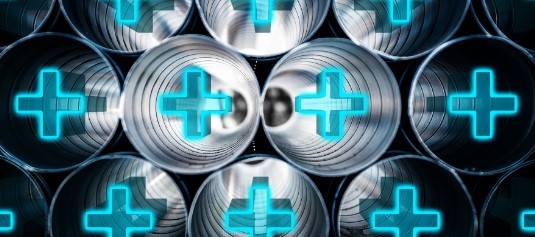

A global team of researchers managed by Quanguan Pang at the Peking University and Donald Sadoway at MIT have released records of a bidirectional, quick-charging aluminium-chalcogen battery activated by a molten-salt electrolyte consisting NaCl-KCl-AlCl3. This is a variation from the conventional aluminium batteries that have low capacity compound formulations than the positive elemental-chalogen electrode. Moreover, the molten-salt electrolytes are safer than room-temperature ionic liquids that are prone to high polarization.

The infinite stages of conversions between aluminium and chalogen permit quick charging facilities till 200C and the battery can go through various cycles at extremely high charging rates without forming aluminium dendrite. A research paper defining the steps has been published in the Nature magazine.
The researchers also highlighted that the charging ratio was largely based on the working temperature, with 110 degrees Celsius yielding 25 times faster acceleration than 25 degrees Celsius.
The molten-salt was selected by the research team due to its low melting point which would be beneficial during electrolysis. The critical-most factor that a battery faces is the formation of dendrites, which are thin spikes of metal on the surface of the electrode that gradually grows to join the other electrode, ultimately inducing a short-circuit and disrupting operations. But the molten salt is a very good alternative to eliminate malfunction.
The battery needs no outsourced heat to harness its operating temperature. The heat is produced automatically with the electrochemical process of charging and discharging the battery.
Sadoway claims that this battery formulation would be acceptable for the purpose of powering a single home or a small to medium business producing on the order of ten kilowatt-hours of storage capacity.
Sadoway and his students had developed a liquid metal battery many years ago which had jumpstarted a spinoff company called Ambri that expects to deliver its first components within 2023. These liquid metal batteries are suitable for larger installations unlike the aluminium-chalcogen batteries.
The tinier scaled aluminium-sulfur batteries would be extremely compatible for application in electric vehicle charging stations, as it is told by Sadoway. He fathoms that when electric vehicles become commonly availed in the market, there would be a certain dependency on these batteries for a quick recharge.
Just like the current situations at pump stations, there would be queues to charge an electric vehicle. He added: “if you try to do that with batteries and you want rapid charging, the amperages are just so high that we don’t have that amount of amperage in the line that feeds the facility.”
A battery line that can store and release power so rapidly would be a boon for the emerging electric vehicle market; making expensive new power lines the technology of the past.
This new technology has already been adopted by a latest spinoff company named Avanti, which has licensed the patents to its base. Avanti has been co-founded by Sadoway, who is the Chief Scientific Advisor and Luis Ortiz, also the co-proprietor of Ambri.
The research team comprised of members from the Yunnan University, Peking university and the Wuhan University of Technology, situated in China; American educational institutions like, the University of Louisville, in Kentucky; the University of Waterloo, in Canada; Oak Ridge National Laboratory, in Tennessee; and MIT. The entire research was seconded by the MIT Deshpande Center for Technological Innovation, MIT Energy Initiative and the ENN Group, a Chinese energy company.
Responses








